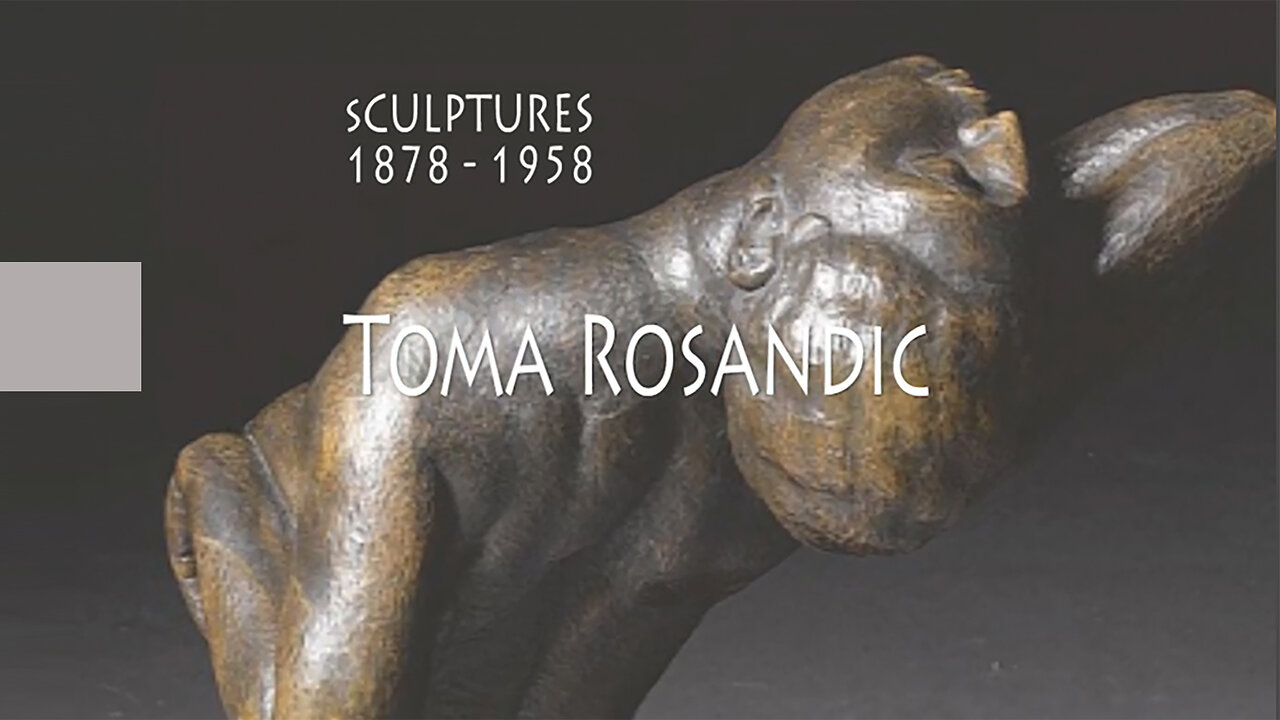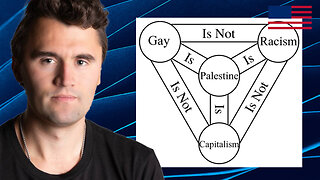Premium Only Content

Toma Rosandic - Sculptures (1878 - 1958)
Toma Rosandić (baptized as Tomaso Vincenzo, 22 January 1878 – 1 March 1958) was a Serbian and Yugoslav sculptor, architect and fine arts pedagog. Together with Ivan Meštrović (1883–1962), he was the most prominent of Yugoslav sculptors of his day.
Rosandić was born in the Dalmatian city of Split, Austria-Hungary, the son of a stoneworker. The family name, Rosandić originates from Cetinska Krajina, in the Dalmatian Hinterlands. During the early years in Split, Rosandić learnt to carve in wood as well as stone and was much inspired by the younger Meštrović who had moved there from Otavice. Both sculptors studied overseas before returning to Split, Rosandić touring Italy and exhibiting in Milan in 1906 and Belgrade in 1912.
He exhibited his artworks as a part of Kingdom of Serbia's pavilion at International Exhibition of Art of 1911.
Something of their parallel development and underlying rivalry can be understood from their respective projects to combine sculpture and architecture. Both constructed a mausoleum, Rosandić for the Petrinović family (Supetar, on the island of Brač off Split) and Meštrović to the Račić family (Cavtat, south of Dubrovnik). Each exhibit the influence of Dalmatian history, but while Meštrović's mausoleum is based on the principle of simplicity, Rosandić richly ornamented his building with a blend of Gothic and Renaissance motifs to express a more national character.
With the outbreak of World War I, Rosandić left for London where he exhibited at the Grafton Galleries in 1917 and later in Brighton and Edinburgh. During World War II, Rosandić settled in Belgrade. He was interned by the German occupation forces during the war, but was later released through the intervention of Dragomir Jovanović. Rosandić later testified at the Belgrade Process.
Rosandić was a member of the Serbian Academy of Sciences and Arts since 1948. He founded a prominent school in Belgrade known as the "Master Workshop". Amongst the many artists and public personalities that frequented the workshop was Henry Moore, during his exhibition in Belgrade in March 1955.
In his maturity, Rosandić executed two of his greatest masterpieces: the pair of stone statues of a man struggling with a horse, which flank the entrance to the Federal Parliament building in Belgrade (today Parliament of Serbia), and a massive stone frieze of figures for a monument in Subotica, Vojvodina, Serbia (1952). Many of his bronze projects at this time were cast in the Voždovac foundry and other works by his hand can be found at the Toma Rosandić Memorial Museum and the Museum of Contemporary Art, Belgrade.
Rosandić returned to Split before his death in 1958.
-
 2:54:04
2:54:04
The Dana Show with Dana Loesch
3 hours agoWATCH: The Dana Show LIVE on Rumble! 06-10-25
36.5K4 -
 DVR
DVR
NEWSMAX
5 hours agoSoy Boys, Cinder Blocks & Civil Unrest | The Rob Carson Show (06/10/2025) | NEWSMAX Podcasts
25.4K -
 1:17:44
1:17:44
Russell Brand
3 hours agoTrump Calls For Gavin Newsom’s ARREST + RFK OUSTS Entire CDC Vaccine Team - SF594
99.2K78 -
 1:03:07
1:03:07
Sean Unpaved
3 hours agoCoaching Patience, NFL Minicamp's, & Finals Game 3 Preview
19K -
 1:59:34
1:59:34
The Charlie Kirk Show
3 hours agoIntersectionality Explains It All + Mayhem in LA + Rand vs. the BBB | d'Almeida, Cabassa, Sen. Paul
54K28 -
 28:12
28:12
CryptoWendyO
1 hour ago $0.03 earnedXRP ADA INTEGRATION TO TRIGGER PARABOLIC MOVES?
7.7K -
 1:07:06
1:07:06
BitLab Academy
3 hours ago $0.01 earnedCrypto Breakout! Bitcoin & Altcoin Dip Setup Next Major Pump!
9.51K2 -
 1:20:32
1:20:32
Simply Bitcoin
3 hours ago $0.13 earnedBillionaire FORCES Jordan Peterson To See The $400T Bitcoin Black Hole | EP 1263
26.8K11 -
 1:04:40
1:04:40
Timcast
3 hours agoDEAD BODY Found Amid MASS LOOTING As LA Riots Spread Nationwide
123K178 -
 2:03:09
2:03:09
Steven Crowder
6 hours ago🔴 LA on the Brink: Riots Push Trump to Edge of Invoking Insurrection
345K265